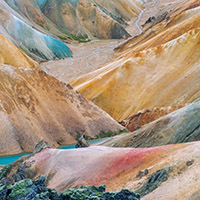Beginner’s guide to professional photo printing: 4 tips to help you make beautiful prints
posted Wednesday, February 23, 2022 at 1:00 PM EDT

Printing your photographs is one of the most rewarding, exciting parts of photography. However, many photographers struggle with getting their prints to look how they expected and match the beautiful image they see on their computer monitor. If this problem sounds familiar, a new video by photographer Mahesh Thapa for Adorama will prove very helpful.
Before diving into it, it's important to have realistic expectations for your prints. No matter what you do, a print will never look exactly like your monitor. Reflected light is different than transmitted light. However, the goal is to get as close as possible, especially with overall visible brightness, color accuracy and most importantly, the 'feel' you want to convey with your image.
With some help from the experts at Printique, Thapa discusses the four primary components of achieving great prints. First, is your monitor calibrated? Printique uses X-Rite calibration tools, although they also recommend that photographers either make or order small print proofs to see how real prints compare to their monitor and then adjust accordingly. If you're printing at home or paying for a print, you don't want your first print to be a large, costly 20 x 30. It's better to start with small test prints. Thapa calibrates his monitors and estimates that the calibration process gets him about '90 percent of the way there,' and then he relies upon test prints to dial in the perfect settings. If you're ordering prints, Thapa recommends reaching out to see if they offer discounted test prints.
The second piece of advice is to make sure you're working with a properly edited output file. Thapa recommends a 300 DPI (or PPI) resolution. If you're making a large print, you may need to increase the resolution of your file. You can use numerous tools for this, including some built-in resolution tools in Adobe Photoshop. There are also dedicated apps, such as Topaz Gigapixel AI, that are designed for enlarging images for high-quality results. To maximize detail, you want to ensure that your file is the correct size of your desired print. There's been much debate about the ideal resolution for images, but Printique and many other printing services recommend 300 DPI/PPI.
Even if your file is the correct size and resolution and looks great on your calibrated monitor, you may be disappointed with the final print if you aren't printing images with the correct color profile. Adobe RGB and P3 have a wider color range than sRGB, the color profile commonly used on the web and for in-camera JPEG images (although most cameras offer Adobe RGB for JPEG files, too). Your monitor may not be able to display the full range of Adobe RGB, so check your specific monitor's specs to see what sort of color performance it promises. Nonetheless, even if you can't 'see' the full range of Adobe RGB on your monitor, many printing services accept the color profile, and your print will display a wider tonal range than if you submitted an sRGB file.
Your selected file format may not impact the final look of your print as much as you might think. While photographers often espouse the benefits of RAW, for example, when it comes to printing, JPEG files can look fantastic. Thapa has never seen a difference between a print from a properly sized, edited JPEG file and an uncompressed TIFF file. Of course, you should still do your editing in RAW and save your output in a non-destructive, high-quality file, but a maximum quality JPEG file is sufficient when it comes to your separate print output image file.
Beyond the four critical components, Thapa also tackles some common questions about printing, including making large prints from low-quality files and what sort of print media is best. To hear his thoughts on these topics, be sure to watch the full video below. For more from Mahesh Thapa, head to his website.
(Via Adorama)